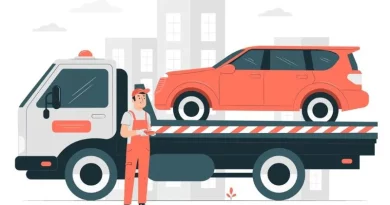Guide to Safely Transport Your Vehicle
Moving your vehicle across the country can be a daunting task, but it becomes a smooth experience when you understand the process and make informed decisions. This comprehensive guide provides all the information you need to make your vehicle transport process hassle-free and cost-effective.
Understanding Your Transport Options
Before you embark on the journey of transporting your vehicle, it’s crucial to understand your options. There are two main types of carriers you can choose from, each with its own set of pros and cons.
Open Carrier Transport
Open carrier transport is the most common method, with your vehicle being transported on an open-air trailer along with several other cars. It’s an economical option, but exposes your vehicle to the weather and road conditions.
Enclosed Carrier Transport
Enclosed carrier transport is the more expensive option, where your vehicle is transported in a fully enclosed trailer, protecting it from the elements and road debris. This is an ideal choice for high-value or classic cars, providing them extra protection during transit.
Choosing a Reliable Vehicle Transport Company
Choosing the right transport company is crucial to the safety of your vehicle. You need a company that not only delivers your car safely but also provides excellent customer service throughout the process.
Research and Reviews
Start by conducting thorough research on various auto transport companies. Look at the services they offer, their customer reviews, and their pricing. Make sure they offer the type of carrier you need, whether it’s open or enclosed.
Verifying Legitimacy
A reputable company should be registered with the Department of Transportation (DOT). You can cross-check their USDOT number on the Federal Motor Carrier Safety Administration (FMCSA) website to verify their legitimacy.
Customer Service
A company that values its customers will be responsive, transparent, and helpful throughout the process. Look for companies that are communicative and answer your questions promptly and thoroughly.
Understanding the Pricing Factors
The cost of shipping your vehicle can vary based on several factors. Understanding these factors can help you anticipate the cost and choose a company that offers the best value for money.
Your Location and Distance
The cost of transport is significantly influenced by your current location and the distance to your destination. The farther you are moving, the higher the cost.
Vehicle Size and Weight
The size and weight of your vehicle also affect the cost. Larger and heavier vehicles require more resources to transport, thus increasing the cost.
Time of Year
The time of year can also affect the cost of vehicle transport. For instance, moving during peak seasons or harsh weather conditions may increase the cost.
Evaluating Insurance Coverage
Before you hand over your vehicle to the transport company, verify their insurance coverage and check if your own auto insurance covers your car during transit.
Transport Company’s Insurance
Ask the transport company about their insurance coverage. They should be able to provide a certificate of insurance and explain what damages are covered during transit.
Your Auto Insurance
Check with your insurance agent to see if your auto insurance covers your vehicle while it’s being transported by a third party. This gives you an extra layer of protection in case of any unforeseen damages.
Preparing Your Vehicle for Transport
Once you’ve chosen a transport company, you need to prepare your vehicle for transport. Here are some steps to ensure your car is ready for the journey.
Inspect Your Car
Before your car is loaded onto the carrier, inspect it for any existing imperfections. Document any dents, scratches, or other damages. You may also want to take photos as evidence.
Remove Personal Belongings
Empty your car of all personal belongings. These items are not covered by the transport company’s insurance, and they can cause damage to your car’s interior during transit.
Install a Car GPS Tracker
We recommend you to install a gps tracker in your car, this will help you track your car and will also ensure the safety of your vehicle. Use any of these car gps trackers that have the features like real-time updates and long battery life.
Check Alarm and Fuel Level
Check with the transport company if they need your car’s alarm deactivated or require a specific amount of fuel in the tank.
Getting Car Shipping Quotes
Once you’ve narrowed down your choice of transport companies and determined your preferred transport method, it’s time to get shipping quotes.
Provide Accurate Information
Provide accurate information about your vehicle, your location, and your destination to get the most precise estimates. Ask about what’s included in the price, any potential hidden fees, and their insurance coverage.
Compare Quotes
Don’t just go for the cheapest quote. Compare the quotes from different companies, considering their services, customer reviews, and insurance coverage. The best value for money is what you’re looking for, not necessarily the lowest price.
Scheduling Your Car Pickup
Planning your car pickup requires balancing your needs, your schedule, and the transport company’s availability. Most companies provide a pickup window rather than a specific date.
Be Flexible
Being flexible with your pickup date can help you avoid additional costs. If you need your car picked up or delivered by a specific date, companies often offer expedited services for an extra fee.
Consider Weather and Traffic Conditions
Keep in mind that weather, traffic, or delays with other shipments can affect the pickup date. It’s always wise to have a buffer in your schedule to accommodate any unexpected delays.
Reviewing the Bill of Lading
The bill of lading is a crucial document in the vehicle transport process. It’s a record of your car’s condition at pickup and delivery, and it’s essential for filing any damage claims.
Inspection at Pickup and Delivery
At pickup, you and the driver will conduct a thorough inspection of your car and note any existing damages on the bill of lading. Take photos for your records. Upon delivery, conduct another inspection and compare the condition to the notes and photos from the pickup.
Keep the Bill of Lading Safe
Keep your bill of lading safe. It’s your proof of the condition of your vehicle at pickup and delivery, and you’ll need it if you have to file a damage claim.
Enjoying Your New Adventure
Once you’ve successfully transported your vehicle, it’s time to enjoy your new adventure. Knowing that you’ve made informed decisions and taken all the necessary steps for a safe vehicle transport can give you peace of mind, allowing you to focus on settling into your new home or exploring your new surroundings.
Shipping your vehicle doesn’t have to be a stressful experience. With the right knowledge and careful planning, you can ensure your vehicle is safely transported, ready for you to hit the road on your next adventure.




